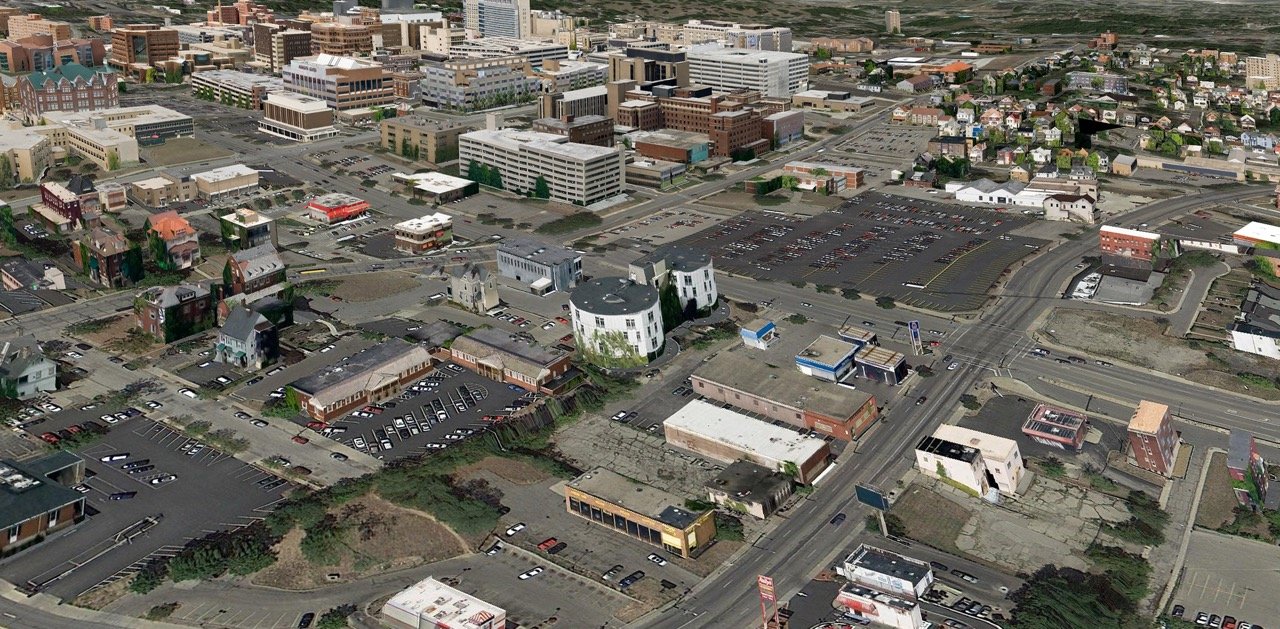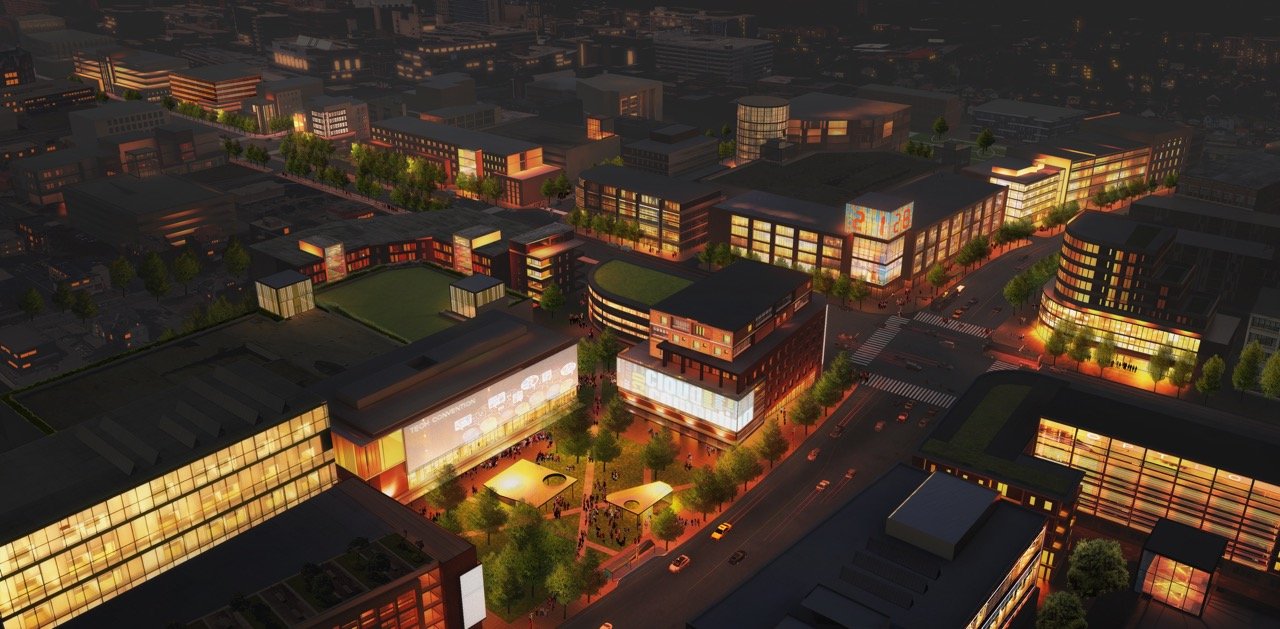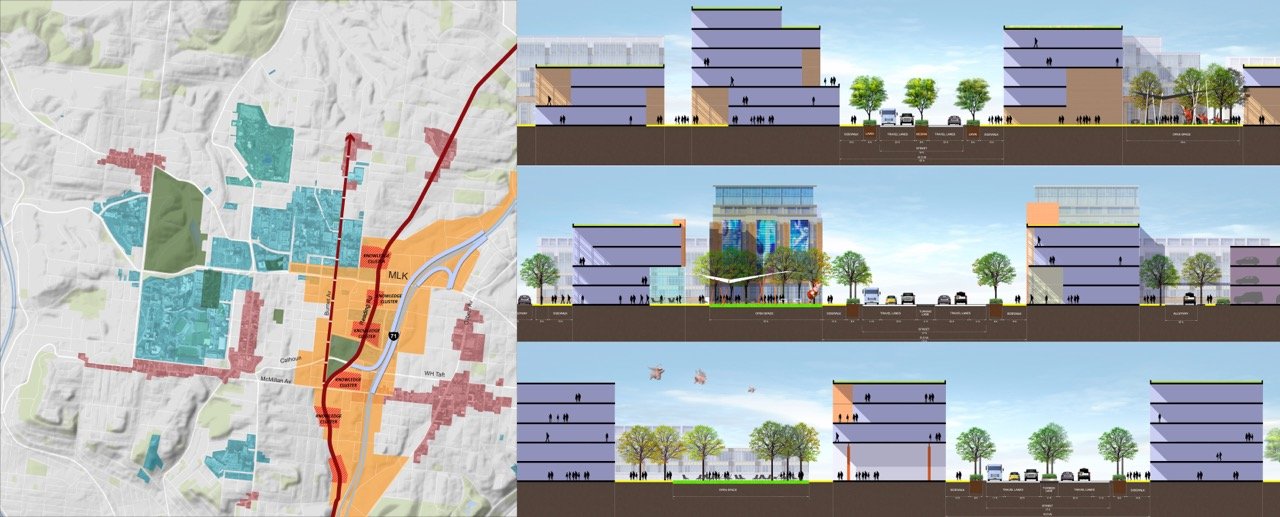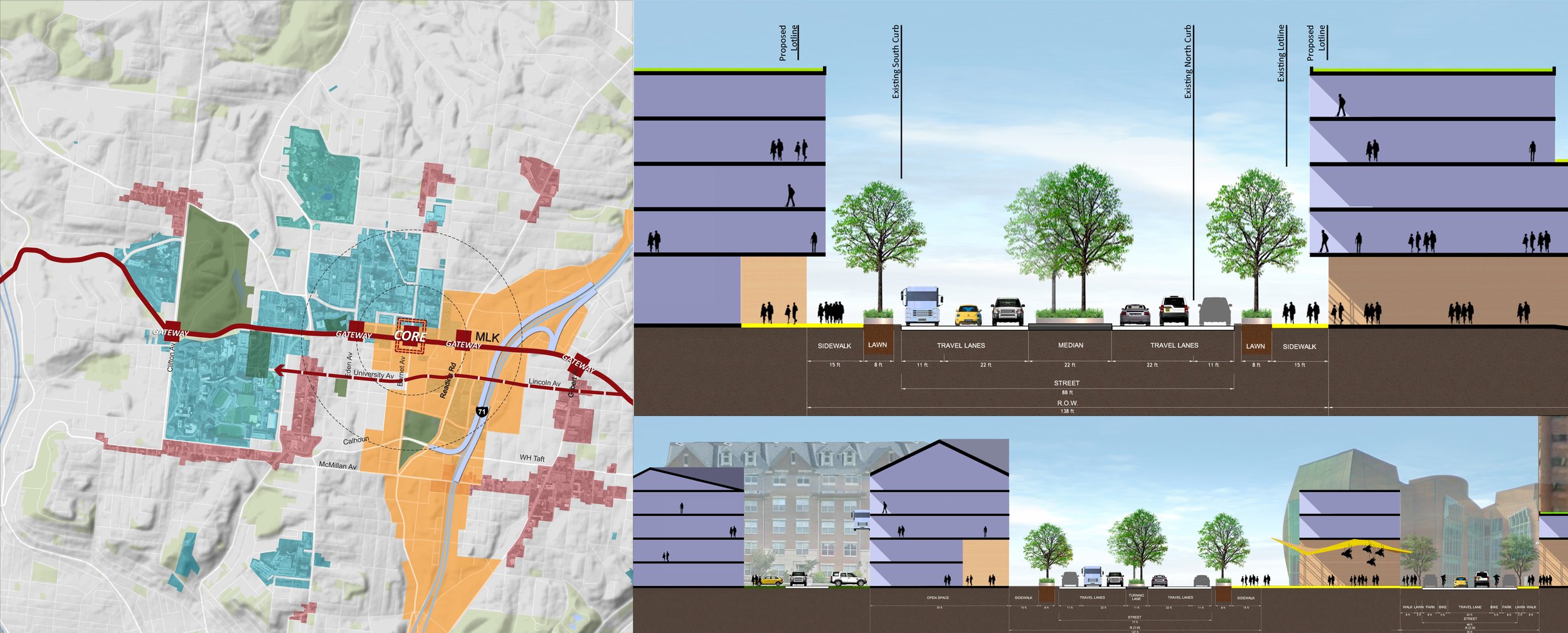Location: Cincinnati, OH
Status: 2013-2016
Client: Uptown Consortium
Collaborators: Work completed while at Sasaki as Project Manager, Engagement Lead, and Project Urban Designer, in collaboration with Cincinnati architects GBBN and economists RCLCo
Impact Areas: Nontraditional Collaborations, Equitable Decision-Making Strategies
The project team was tasked with articulating a shared vision for the future of Uptown Cincinnati based on three-pronged goals: (1) balancing the interests of institutions and their host communities; (2) economic growth, community vitality and the public realm; and (3) thinking of the street as a transportation facility and as a place.
Uptown Cincinnati is home to many of the city’s major educational, health, and cultural institutions. Although the district is bustling with activity, Martin Luther King Drive (MLK)—the spine of Uptown—is an auto-dominated strip with little street life or pedestrian amenity. A new highway interchange at Interstate 71 was underway, which promised to improve access but would also increase in car traffic through a predominantly black neighborhood where most households had limited or no access to a car.
From the beginning, the team convened a number of community organizations and residents, with the understanding that many folks held deep-seated and justified feelings of distrust, frustration over neglected infrastructure, and a perception of mismatched priorities across stakeholders. Through a series of ongoing, sustained meetings, the team worked with a steering committee of neighborhood associations to develop two different schemes, rooted in a set of core principles. These meetings were also punctuated by a set of visioning exercises, which allowed the team to identify specific sites for commercial investment and future residential development.
While the scope was initially focused on developing a planning and design vision, this process of engagement created new partnerships in Uptown Cincinnati between various anchor institutions and community groups. These novel partnerships have since given rise to a number of positive benefits, from the Homeowner Stabilization Program (funded by the Cincinnati Children’s Hospital Medical Center) and the creation of new multi-family housing development projects (jointly led by the Uptown Consortium and the Avondale CDC).
Location: Cincinnati, OH
Status: 2013-2016
Client: Uptown Consortium
Collaborators: Work completed while at Sasaki as Project Manager, Engagement Lead, and Project Urban Designer, in collaboration with Cincinnati architects GBBN and economists RCLCo
Impact Areas: Nontraditional Collaborations, Equitable Decision-Making Strategies
The project team was tasked with articulating a shared vision for the future of Uptown Cincinnati based on three-pronged goals: (1) balancing the interests of institutions and their host communities; (2) economic growth, community vitality and the public realm; and (3) thinking of the street as a transportation facility and as a place.
Uptown Cincinnati is home to many of the city’s major educational, health, and cultural institutions. Although the district is bustling with activity, Martin Luther King Drive (MLK)—the spine of Uptown—is an auto-dominated strip with little street life or pedestrian amenity. A new highway interchange at Interstate 71 was underway, which promised to improve access but would also increase in car traffic through a predominantly black neighborhood where most households had limited or no access to a car.
From the beginning, the team convened a number of community organizations and residents, with the understanding that many folks held deep-seated and justified feelings of distrust, frustration over neglected infrastructure, and a perception of mismatched priorities across stakeholders. Through a series of ongoing, sustained meetings, the team worked with a steering committee of neighborhood associations to develop two different schemes, rooted in a set of core principles. These meetings were also punctuated by a set of visioning exercises, which allowed the team to identify specific sites for commercial investment and future residential development.
While the scope was initially focused on developing a planning and design vision, this process of engagement created new partnerships in Uptown Cincinnati between various anchor institutions and community groups. These novel partnerships have since given rise to a number of positive benefits, from the Homeowner Stabilization Program (funded by the Cincinnati Children’s Hospital Medical Center) and the creation of new multi-family housing development projects (jointly led by the Uptown Consortium and the Avondale CDC).









